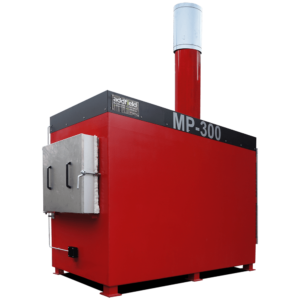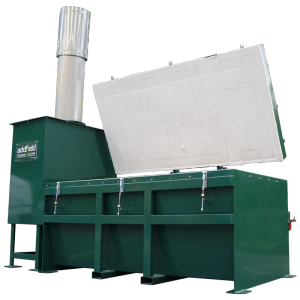
09/09/20
Why a brick refractory is best.
Why should you buy from Addfield? That’s a completely reasonable question, isn’t it? And one that we will always tell you is the right choice for you to make. ‘Buy an Addfield, we have been trusted for over 35 years and our machines speak for themselves,’ of course we are going to tell you that it’s our job. However, we don’t just want you to take our word for it we follow a very low-pressure sales approach here. We like to give you the space to choose the right machine for you, confident in the quality of our machines to help you make the right decision.
One of the most important elements of any purchasing decision is researching the market and discovering the information that’s important to you.
We will always encourage you to complete your own research in all of your available options when looking to invest in a new incinerator or cremator. We do this for two reasons the first is because we want to make sure that you understand what you are getting when you choose Addfield over anyone else. The second is that we want you to be satisfied that you can be happy in the knowledge that you have chosen the right machine for the job.
If you carry out a search for similar companies to Addfield, you will quickly find several manufacturers claiming many things for their machines. However, you will also notice one key difference that sets our machines apart and that is the quality of construction.
Not all machines are built equally as you will quickly learn, they are different shapes, sizes, and colours but one of the biggest differences that you will find often lies beneath the external shell and in fact makes up the heart of any machine so, let us just cover what we believe could be the biggest difference for you to consider and compare the refractory.
The refractory chamber is one of the most important elements of any machine. It is where you load and burn your waste. An effective and insulated refractory can save you thousands of pounds each year in fuel alone.
We are one of the only manufacturers of incinerators and pet cremators to use brick-based multi-layered refractories. In fact, this is what you will find in over 99% of the machines we manufacture. And this is one of the main reasons you can often find our machines in operation for over 20 years whilst competitor products can need replacing much, much sooner.
You will find refractories constructed in one of two ways, Brick or Concrete.
We choose brick, why? Simple, because it’s the best way to do it.

You will find that most of our competitors choose a concrete refractory and the main reason is generally that, it is easier and cheaper to build.
A brick refractory is immensely labour intensive and sadly as traditional industries such as the potteries and steel production have decreased. Colleges have stopped teaching the core skills to enable people to produce these.
So, at Addfield we have addressed this and we train apprentices ourselves. It is very much a specialist skill and our refractory masons are some of the best in the country.
Ask yourself this question what is easier, pouring concrete into a mold or installing three separate layers of refractory?
We occasionally provide concrete refractories. However, these are only on our smallest mobile machines to fit a very specific requirement. All machines that are built to handle loads of 150kg and greater will always be bricked.

What are the long-term benefits of Brick over Concrete?
Well for one it is vastly longer-lasting. Every refractory will go through years of daily usage. This means that every day there will be expansion and retraction of the lining as it heats up and cools down.
The concrete refractory will be held in place with dozens of small steel anchors spaced throughout the case holding the refractory in place with the steel shell. Over time this expansion and retraction will cause cracks, some hairline, and some larger. These cracks will provide access for the energy and heat to escape from the chamber, into the anchor and then into the steel body of the machine. These make the machine increasingly hot during operation. This is why you will often find ‘Danger Hot’ on a concrete refractory machine but not on ours.
Another risk caused by constant expansion and retraction of the refractory is the effect on the integrity of the steel anchors themselves. The steel and refractory lining both expand at different rates. When a crack appears in the concrete (which it will) the heat energy will be conducted through the steel anchor to your steel. If you think this machine will achieve temperatures in excess of 900°C, is conducting energy to the outside steel, do you think this is good for the longevity of the machine?
So why do we use brick?
The bricks we use are great for handling thermal shock, they allow expansion between the joints, are incredibly easy to maintain, for example, if a brick does ever fail you can replace a brick with minimal downtime and often be back up and running on the same day. If concrete fails you need to cut out the anchors, install shuttering and mix concrete and allow the customer to use their fuel for 12 hours to dry out the machine, then if it cracks and breaks again, it’s your fault, as you never dried the concrete properly. We have seen this happen with concrete refractories so many times.

Beyond the technical aspects, what does this really mean to you?
· You won’t be having to reinvest another £40+K in 4 years’ time.
· You’ll be using around 40 litres less fuel for every incineration/cremation cycle. Completing just three of these a week, that’s 6240 litres that could be a saving of around £3,120.00 every year.
At Addfield we aim to be able to answer all of the key questions that you may have and also make you aware of a number of key questions you need to be considering when selecting your machine.
Although our Refractories are the best in the industry they are not the only element that you will find makes our construction superior. Consider the following:
Steel thickness – Addfield uses 8-10mm, where most other manufacturers choose 4-5mm.
What do you think that would mean to you in terms of longevity?
Refractory Thickness – Addfield: 180-220mm
Consider what your new machine will weigh. A triple-layered refractory and thick steel shell is heavy and delivers a more robust solution. If you are comparing an Addfield machine to a similar-sized machine yet ours is twice as heavy, that’s something you really should ask why about.
Caution Hot Signs – Not required on an Addfield
Does the machine require a ‘Caution Hot’ sign? Ours don’t, if the machines are radiating a lot of heat, you are going to have to replace that by having the burners on for longer. What is the impact for fuel economy?
How durable is the paint system on a machine with hot surfaces, vs a paint system designed for modern vehicles?
More importantly, what are the health and safety implications?
Numbers Of Refractory Layers – Three layers are standard on Addfield machines
If you have 800°C heat in the chamber, what happens if a hot face insulation problem occurs and that heat gets behind that insulation layer?
800°C on directly painted steel (or a 20mm insulation board) vs heat on another two layers of insulation. If you use thin steel for that casing what kind of shape is it going to be in?
Steel Anchors – Not required on Addfield Brick refractories
This is an area you won’t know about. So the above illustration is a good example. Anchors hold concrete in place.
When concrete heats and steel heats up together. Which one is going to get hot first? When materials heat up they expand. If the steel is heating up quicker this will create a hole inside loosening its grip. What happens to steel when you constantly heat it and cool it? It becomes brittle and when brittle it cannot hold the concrete in place. What happens when it lets go?
Are you going to choose a costly repair or just throw it away and choose a brick refractory?
Hot Hearth Primary Chambers – Available on our Medical and Pet Cremation ranges
All human crematoriums use a hot hearth system. What do you think are the implications for speed, your throughput and ultimately earning potential of the business from using this approach?
Datalogging – Included as standard on Addfield Incinerators
Every two hours you are going to have to record burn temperatures in the secondary chamber as part of the permit for 10% of burners. (At least for APHA in the UK you do)
Our machines do it automatically other options are going to cause you a lot more labour.
When it comes to price what we quote is the price of our machines, its the price you will pay. Other manufacturers may be able to offer you large discounts that bring their final price lower, after artificially inflating their price. We build our machines by hand ourselves, investing in our workforce, and we select only the best quality materials which, gives you a fantastic finished machine at a fair price. If you ask for a large discount and get one what does that actually say about the machine you are investing in for potentially more than 20 years of usage.
For over 35 years now we have stood by our motto of being ‘Simply Built Better’, if you want to learn more about how we build our machines you are welcome to join the hundreds of visitors that have traveled from the furthest corners of the world and visit our factory to see first-hand why we are number one. If you have any questions do not hesitate to ask us we are here to help.
- British Designed.
British Built. - World leaders in
incineration technology. - Unrivalled build quality
& machine longevity. - Distributed to more
than 150 countries. - Environmentally
Responsible. - Trusted partner, over
40 years experience.






